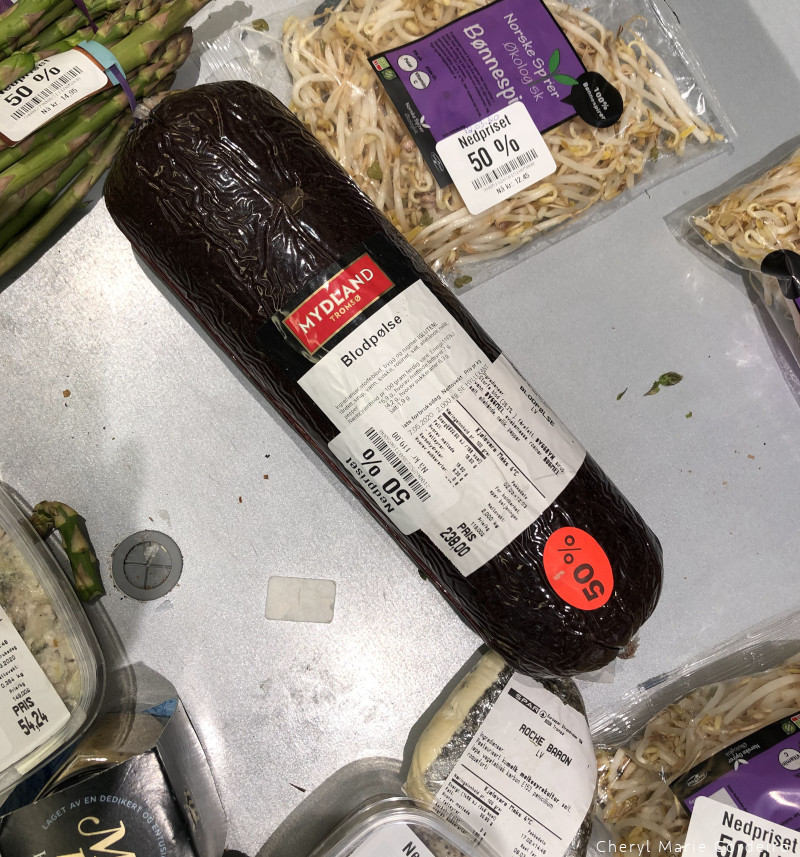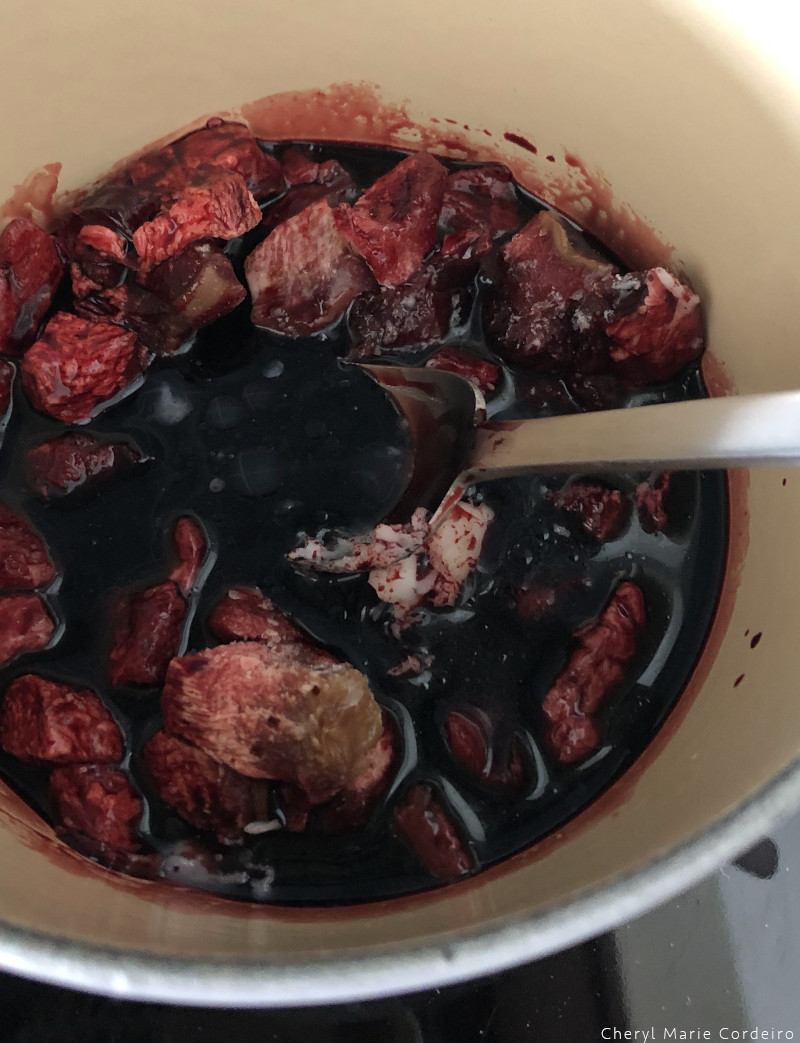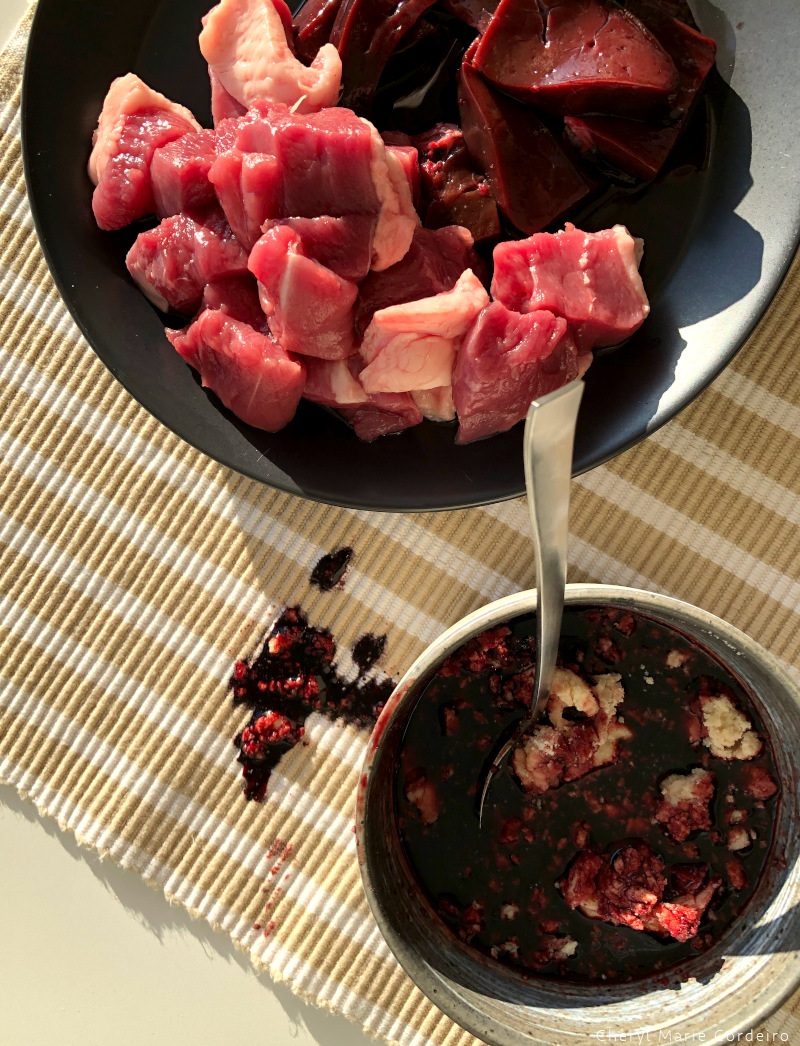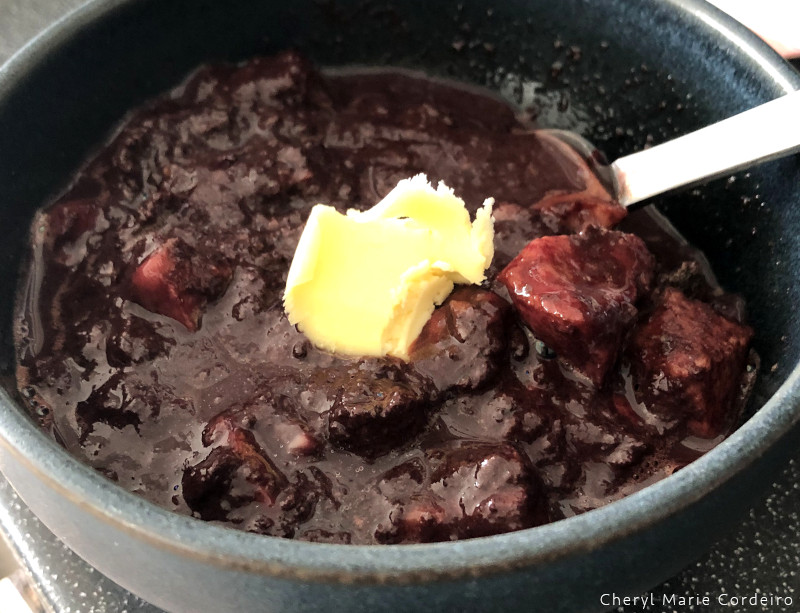This dish of slow cooked beef tongue, animal blood and eggs takes on a dark burgundy, dark chocolate colour after cooking. On top, a dollop of setertype smør, a Norwegian butter with 4% salt.
Text & Photo © JE Nilsson & CM Cordeiro 2020
I was in Gothenburg, Sweden, the past weekend, and with Europe now being the epicenter of Covid-19, I´m currently sitting at home in quarantine for 14 days. This weekend, I thought I´d research a familiar but marginalised ingredient in Nordic cuisine – animal blood.
This morning´s food adventure is around the marginalized and forgotten food, animal blood, in Nordic cuisine. Animal blood has a long culinary use in Nordic and European food. Blodpudding / Black Sausage / Sanguinaccio or Biroldo / Blodpølseare all variations of blood sausages that you can find across Europe. In Sweden, blodpudding is eaten fried, with a side of boiled potatoes and lingonberry jam. This dish is absolutely delicious, particularly when fried in lard or butter.

Blood sausage anyone? As of 12 March 2020, Norway has closed all schools and some public and private business sectors. So there´s been a rush at the grocery stores in the past days to stock up on food, leaving many shelves at the grocery stores empty for the moment. As an example of unrequited love and marginalization of foods, not even a Covid-19 rush to the grocers and a 50% discount on this blood sausage saw anyone go for this lonesome item.
In 2014 thereabouts, the Nordic Food Lab run by The Department of Food Science, at The University of Copenhagen [1] began studying the properties of animal blood, with the objective of expanding its use and applications in everyday recipes [2]. Their experiments found that the coagulating properties of blood allowed it to behave as egg-substitutes, particularly to produce sweet confections such as ice-creams, meringue and sponge cakes. For individuals with allergies to eggs, the Nordic Food Lab found that 65g of blood for one egg (ca. 58g), or 43g of blood for one egg white (ca. 33g) can be used as substitutes in recipes.
I grew up eating pig organ soup in Singapore, where one of the ingredients was cooked coagulated pig´s blood. In my own Nordic taste ventures, apart from blodpudding, I´ve now tried animal blood both raw and slow cooked (as you would do poached eggs or a custard). In general, I think I prefer cooked versions of recipes with blood, as the cooking process brings out the flavour of the ingredient.

Beef tongue (diced) with animal blood and eggs, slow cooking in an enameled cast iron pot.

Raw animal blood with bone marrow (some spilled out of the ceramic mug when the phone I was filming with tipped over and hit the edge of the mug. The blood and marrow combination would certainly benefit in savouriness from some slow cooking to bring out the flavours.
Food adventures and stretching activities have in common for me, a little bit of Dory. “Just keep swimming”, and/or try and try again.
References
[1] The Nordic Food Lab. Nordic Food Lab is now part of Future Consumer Lab at the Department of Food Science at University of Copenhagen. Internet resource at http://nordicfoodlab.org/whoweare.
[2] Paul, E. (2014). Blood and egg. The Nordic Food Lab. Internet resource at http://nordicfoodlab.org/blog/2013/9/blood-and-egg. Retrieved 14 Mar. 2020.
